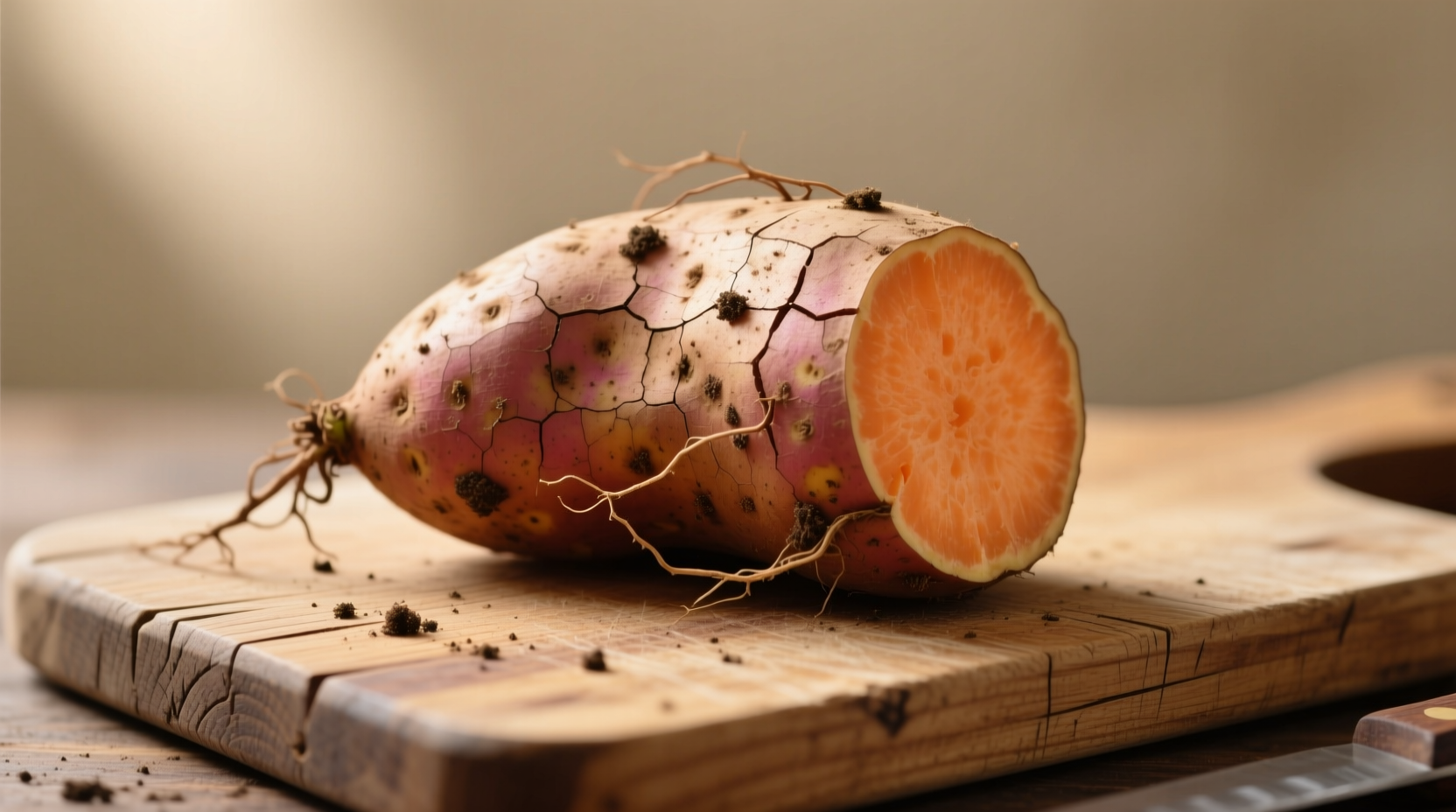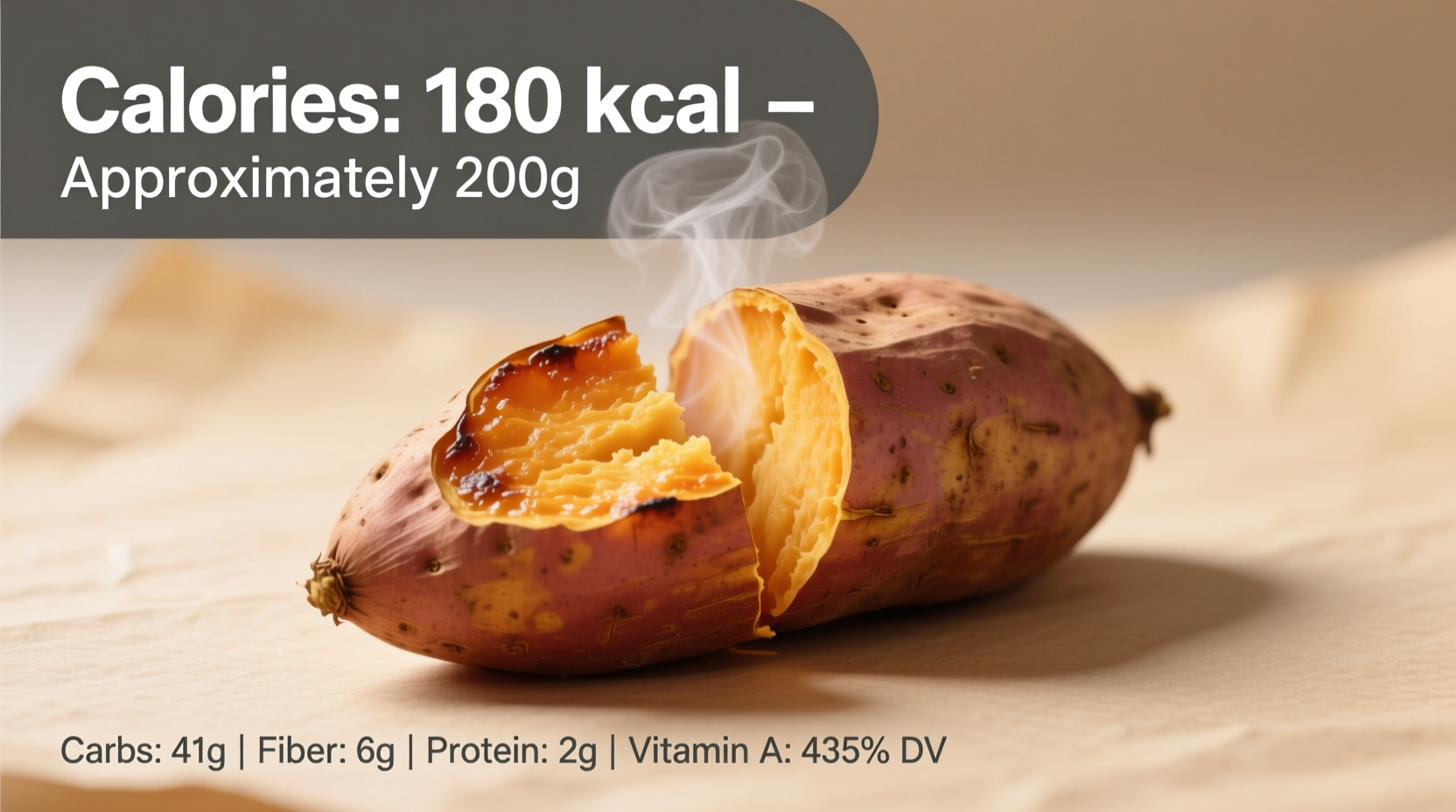Understanding the exact calorie content of whole sweet potatoes helps health-conscious eaters make informed dietary choices without sacrificing flavor or nutrition. Whether you're managing weight, tracking macros, or simply curious about this popular superfood, knowing precise nutritional values empowers better meal planning.
What Determines Calorie Count in Whole Sweet Potatoes
The calorie content of a whole sweet potato varies primarily based on size and variety. Unlike prepared sweet potato dishes that may include added fats or sugars, the raw vegetable's calories come entirely from its natural composition. The United States Department of Agriculture's FoodData Central provides the most reliable reference for these nutritional values.
| Sweet Potato Size | Weight (grams) | Calories | Carbohydrates |
|---|---|---|---|
| Small (4" long) | 100g | 86 | 20g |
| Medium (5" long) | 130g | 103 | 24g |
| Large (6" long) | 180g | 143 | 33g |
| Jumbo (7"+ long) | 250g | 213 | 50g |
This nutritional fact comparison shows how size directly impacts calorie content. The USDA regularly updates these values through rigorous laboratory analysis of representative samples, ensuring accuracy for consumers tracking their dietary intake. When weighing your sweet potato before cooking, you'll get the most precise calorie count for your specific specimen.
Nutritional Benefits Beyond Calories
While calorie count matters for many eaters, sweet potatoes offer exceptional nutritional value per calorie. A medium sweet potato delivers:
- Over 400% of your daily vitamin A needs (as beta-carotene)
- Nearly 30% of your daily vitamin C requirement
- Approximately 15% of your daily potassium needs
- 3.8 grams of dietary fiber (15% of daily value)
- Only 0.1 grams of fat
Unlike simple carbohydrates that cause blood sugar spikes, sweet potatoes have a moderate glycemic index (around 54 for boiled), making them suitable for most balanced diets when consumed in appropriate portions. The fiber content helps regulate blood sugar and promotes digestive health.

How Cooking Methods Affect Calorie Content
The preparation method significantly impacts the final calorie count of your sweet potato dish. Understanding these context boundaries helps maintain accurate tracking:
- Boiling or steaming: Preserves the natural calorie count (103 calories for medium potato)
- Baking: Concentrates natural sugars slightly but maintains similar calorie content
- Roasting with oil: Adds approximately 40-120 calories depending on oil amount
- Frying: Can double or triple the calorie content (200-300+ calories)
- With added toppings: Marshmallows, brown sugar, or butter substantially increase calories
For those tracking calories precisely, weighing your sweet potato before cooking provides the most accurate starting point. The Academy of Nutrition and Dietetics recommends measuring foods in their raw state for consistent tracking.
Practical Portion Guidance for Different Goals
How much sweet potato should you eat based on your health objectives? Consider these evidence-based recommendations:
- Weight management: One medium sweet potato (103 calories) makes an excellent carbohydrate source for one meal
- Active individuals: 1.5-2 medium sweet potatoes can provide sustained energy before workouts
- Diabetes management: Pair half a medium sweet potato with protein and healthy fats to moderate blood sugar response
- General health: 1 medium sweet potato 2-3 times weekly provides valuable nutrients without excessive calories
Registered dietitians often recommend sweet potatoes as a superior carbohydrate choice compared to white potatoes due to their higher fiber and nutrient density. The American Heart Association recognizes sweet potatoes as part of a heart-healthy diet pattern when prepared without added fats or sugars.
Common Misconceptions About Sweet Potato Calories
Several myths persist about sweet potato nutrition that deserve clarification:
- Myth: Sweet potatoes are too high in carbs for healthy eating
Reality: Their complex carbohydrates and high fiber content make them suitable for most diets - Myth: The skin contains most of the calories
Reality: The skin contains valuable fiber but minimal additional calories - Myth: All orange-fleshed varieties have identical nutrition
Reality: Beta-carotene content varies by variety, affecting vitamin A levels
Research published in the Journal of Agricultural and Food Chemistry shows that cooking sweet potatoes actually increases the bioavailability of beta-carotene, making the nutrients more accessible to your body despite minor changes in calorie density.
Integrating Sweet Potatoes Into Your Meal Plan
For practical implementation, consider these preparation strategies that maintain the natural calorie profile while maximizing flavor:
- Steam cubed sweet potatoes and toss with lemon juice and herbs
- Roast wedges with a light spray of oil instead of heavy coating
- Use mashed sweet potato as a base for nutrient-dense bowls
- Substitute sweet potato for higher-calorie starches in recipes
- Enjoy cold sweet potato salad with Greek yogurt dressing
Meal timing also matters—consuming sweet potatoes earlier in the day allows your body to utilize the carbohydrates for energy rather than storing them. The Dietary Guidelines for Americans 2020-2025 recommend incorporating a variety of colorful vegetables, including orange-fleshed varieties like sweet potatoes, for optimal nutrient intake.
How many calories in a whole sweet potato without skin?
Removing the skin from a medium sweet potato (130g) reduces the calorie count by only about 5-10 calories, as most nutrients and calories are in the flesh. The skin primarily adds fiber rather than significant calories.
Do different colored sweet potatoes have different calorie counts?
Orange, purple, and white sweet potato varieties have nearly identical calorie counts by weight. The primary differences lie in their phytonutrient profiles rather than caloric content.
How does the calorie content change when sweet potatoes sprout?
Sprouting sweet potatoes converts some starches to sugars, potentially increasing calories slightly. However, sprouted sweet potatoes remain safe to eat if the sprouts are removed and the potato remains firm.
Are canned sweet potatoes higher in calories than fresh?
Canned sweet potatoes packed in syrup contain significantly more calories (up to 200+ for a cup) than fresh. Those packed in water have similar calorie content to fresh but may lose some water-soluble nutrients during processing.











 浙公网安备
33010002000092号
浙公网安备
33010002000092号 浙B2-20120091-4
浙B2-20120091-4